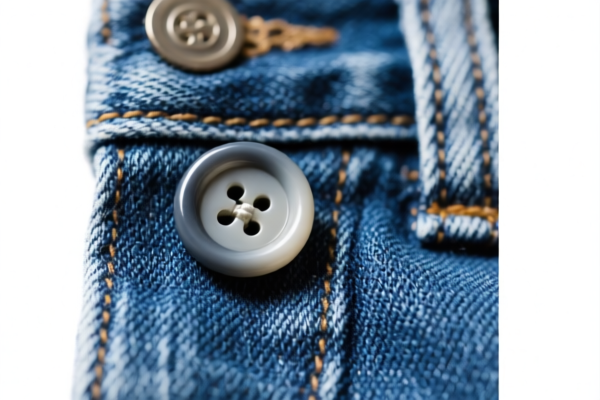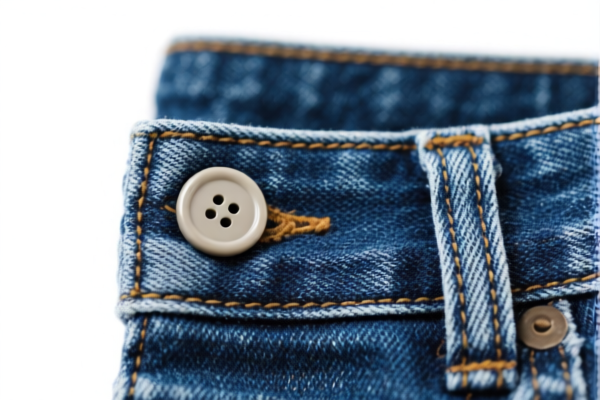| HS Code | Official Doc | Tariff Rate | Origin | Destination | Effective Date |
|---|---|---|---|---|---|
| 8308100000 | Doc | 1.1¢/kg + 2.9%+55.0% | CN | US | 2025-05-12 |
| 8308909000 | Doc | 57.7% | CN | US | 2025-05-12 |
| 6117909080 | Doc | 52.1% | CN | US | 2025-05-12 |
| 6117909095 | Doc | 52.1% | CN | US | 2025-05-12 |
| 6217909075 | Doc | 52.1% | CN | US | 2025-05-12 |
| 6217909075 | Doc | 52.1% | CN | US | 2025-05-12 |
| 9606220000 | Doc | 55.0% | CN | US | 2025-05-12 |
| 9606296000 | Doc | 57.9% | CN | US | 2025-05-12 |




Jeans Button
A jeans button is a fastening element specifically designed for denim garments, most commonly jeans. They are characterized by their robust construction and distinctive appearance, differing from standard shirt or trouser buttons.
Material
Traditionally, jeans buttons were made from copper, providing durability and a characteristic patina over time. Modern jeans buttons are frequently constructed from brass, zinc alloy, or other metal alloys, often with a copper or antique brass finish for aesthetic appeal. Some buttons utilize plastic or horn for less critical applications or decorative purposes.
Purpose
The primary purpose of a jeans button is to securely fasten the waistband closure of jeans, replacing or supplementing traditional buttonholes and zippers. They are also used decoratively on pockets and as embellishments.
Function
Jeans buttons function by being hammered or pressed through the denim fabric, creating a permanent fastening point. They typically feature a shank on the back for attachment and a head with a raised design. The button is secured by a corresponding post or tack that is riveted through the fabric. The strength of the fastening comes from the crimping of the post and the resistance of the metal to shearing.
Usage Scenarios
- Waistband Closure: The most common application, providing a secure and durable closure for jeans.
- Pocket Reinforcement: Used on pockets to prevent tearing and increase longevity.
- Decorative Element: Employed for stylistic purposes, often featuring branded logos or unique designs.
- Repair/Replacement: Used to replace lost or damaged buttons on existing jeans.
Common Types
- Standard Jeans Button: A four-hole button, typically 0.625 inches (15.9 mm) in diameter, used for waistband closures.
- Tack Button: A smaller, single-post button used for pockets and other reinforcement applications. Often features a flat back.
- Branded Buttons: Feature the manufacturer's logo or name, commonly found on premium denim brands.
- Antique Buttons: Older buttons, often made of copper, exhibiting a patina and unique design features.
- Covered Buttons: Buttons with a fabric covering, offering a more subtle or customized appearance.
- Horn Buttons: Made from natural horn, offering a unique aesthetic and often used on higher-end denim.
Jeans buttons typically fall under the category of buttons used for clothing, specifically those made of base metal. Here's a breakdown of relevant HS codes based on the provided information:
-
9606220000: This HS code covers buttons made of base metal not covered with textile material. This is a likely classification for standard jeans buttons if they lack a fabric covering.
- 96: Chapter 96 – Miscellaneous manufactured articles.
- 06: Heading 96.06 – Buttons, press-fasteners, snap-fasteners and press-studs, button molds and other parts of these articles; button blanks.
- 220000: Subheading 9606.22.00 – Buttons: Of base metal, not covered with textile material.
-
9606296000: This HS code covers buttons categorized as "Other" within the broader button category. This could apply to jeans buttons with unique designs or materials not specifically covered elsewhere.
- 96: Chapter 96 – Miscellaneous manufactured articles.
- 06: Heading 96.06 – Buttons, press-fasteners, snap-fasteners and press-studs, button molds and other parts of these articles; button blanks.
- 296000: Subheading 9606.29.60 – Buttons: Other: Other: Other.
Regarding HS code 9606220000 and 9606296000, the applicable total tax rate is 55.0% and 57.9% respectively. This includes a base tariff and an additional tariff.
Customer Reviews
No reviews yet.